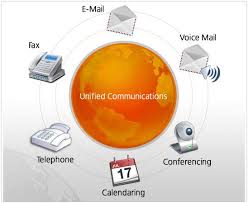 It is high time that businesses stop wasting their time and money on resources that are not going to fetch them the desired returns. Market is highly competitive and the need of the hour is to opt for processes that are really efficient. The success and failure of an enterprise is determined by the business processes and technology plays a very significant role in optimizing the processes. Communication systems in a business need to be seamless so that the information flow is uninterrupted. Over the past two decades, telecommunication technology has made huge advancements and new channels of communication have come into play. Now the quick-paced advancements have given rise to unique challenges in the field of communication that can be negated by Unified communication systems.
It is high time that businesses stop wasting their time and money on resources that are not going to fetch them the desired returns. Market is highly competitive and the need of the hour is to opt for processes that are really efficient. The success and failure of an enterprise is determined by the business processes and technology plays a very significant role in optimizing the processes. Communication systems in a business need to be seamless so that the information flow is uninterrupted. Over the past two decades, telecommunication technology has made huge advancements and new channels of communication have come into play. Now the quick-paced advancements have given rise to unique challenges in the field of communication that can be negated by Unified communication systems.
In this article, we are going to take a look at features of unified communication systems and also delve into the ways they help to eliminate the challenges.
Cloud Computing
Cloud computing technology is the basis of Unified communication systems, which implies that all the endpoint devices are connected to the cloud server that hosts the tools. Variety of communication applications and tools has all been integrated with the help of unified communication system and this includes audio/video calling, white boarding, voice calling, web conferencing, email etc. The integration of the applications and communication tools results in lesser dependency on multiple devices and even reduces the latency issues. Now, this leads o smoother communication and better business operations. The geographical barriers are easily eliminated as a variety of devices can be integrated to the core system. Thus, employees can work from any location of their choice while maintaining an impeccable communication channel. The uninterrupted communication among mobile devices, fixed systems and hosted applications results in to greater efficiency and higher productivity.
No fuss setup and Management
Setting up the unified communication system is easy and users only need to choose a package from any of the service providers in the market. The service provider takes care of all the installation related detailing and installation is often completed from remote locations. The unified communication managed centrally and all the issues are addressed from the central location. The existing communication network or mobile communication system in the company can integrated to form the unified communication system. The users are provided with a secure platform from where the endpoint devices can be easily managed.
Numerous Voice Features
A plethora of voice features are made available within a unified communication system. Some of the standard features provided with the unified communication services are as follows:
Presence – Users will be able to get the real time status of another user logged into the same network. Thus, it will be easier to detect whenever someone is available for communication.
One number – Users can use only one number for all the devices, so number related confusion can be easily avoided.
One click Outbound calls – Only one click will be required for placing outbound calls and this is bound to make life easier for the users.
Desktop call control – Now, the users can answer to their calls from their tab or PC. The call manager application is used to controlling the calls from different endpoint devices.
Conferencing – Unified communication even helps to integrate the conferencing technology on a common platform. Voice or video conferencing can be carried out from any of the devices but they should be all connected to the same network.
Author Bio:
Michelle has good knowledge in installing and implementing VoIP for large and medium companies. She is writing about her learning experience in Baron Blog. She is keen to push the same advantage to small businesses across the US.